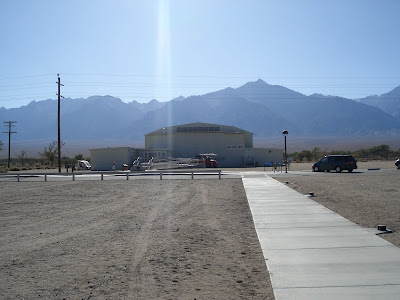Visited the Manzanar War Relocation Center over the weekend - the site of one of the internment camps where Japanese-Americans were sent to live during World War II. It's a national historic site now, and the central building has been transformed into a really excellent museum:
The exhibits are designed to evoke a pretty complex cocktail of emotions. It starts out more or less how you'd expect: with an overview of American racism against the Japanese, the panic and anti-Japanese sentiment that followed in the wake of Pearl Harbor, the trauma the inhabitants felt at being forced to abandon all their worldly goods, their homes and businesses, at being downgraded from "citizen" to "suspect."
But the museum is mostly concerned with life at the Relocation Center, and that is bittersweet: composed first of the indignities the inhabitants suffered, and then their triumph over those limitations. The exhibits highlight their strength, resilience, creativity - the vibrancy of the culture that developed at Manzanar, despite all obstacles. Residents hated the bland, Western cafeteria food - so they planted gardens and grew fresh produce with which to prepare more appetizing dishes. They hated their army issue cots and hay mattresses - so they learned to build furniture from fruit crates. They organized schools, clubs, sports teams...this is a picture of a home plate for the WRC's baseball diamond, made of bark:
It's a wonderful museum, and it hits all the right notes. It's a reminder of a shameful act, a moment in our history when America failed. But it doesn't dehumanize or overpower the story of the Japanese interned there, whose stories are inspiring.



No comments:
Post a Comment